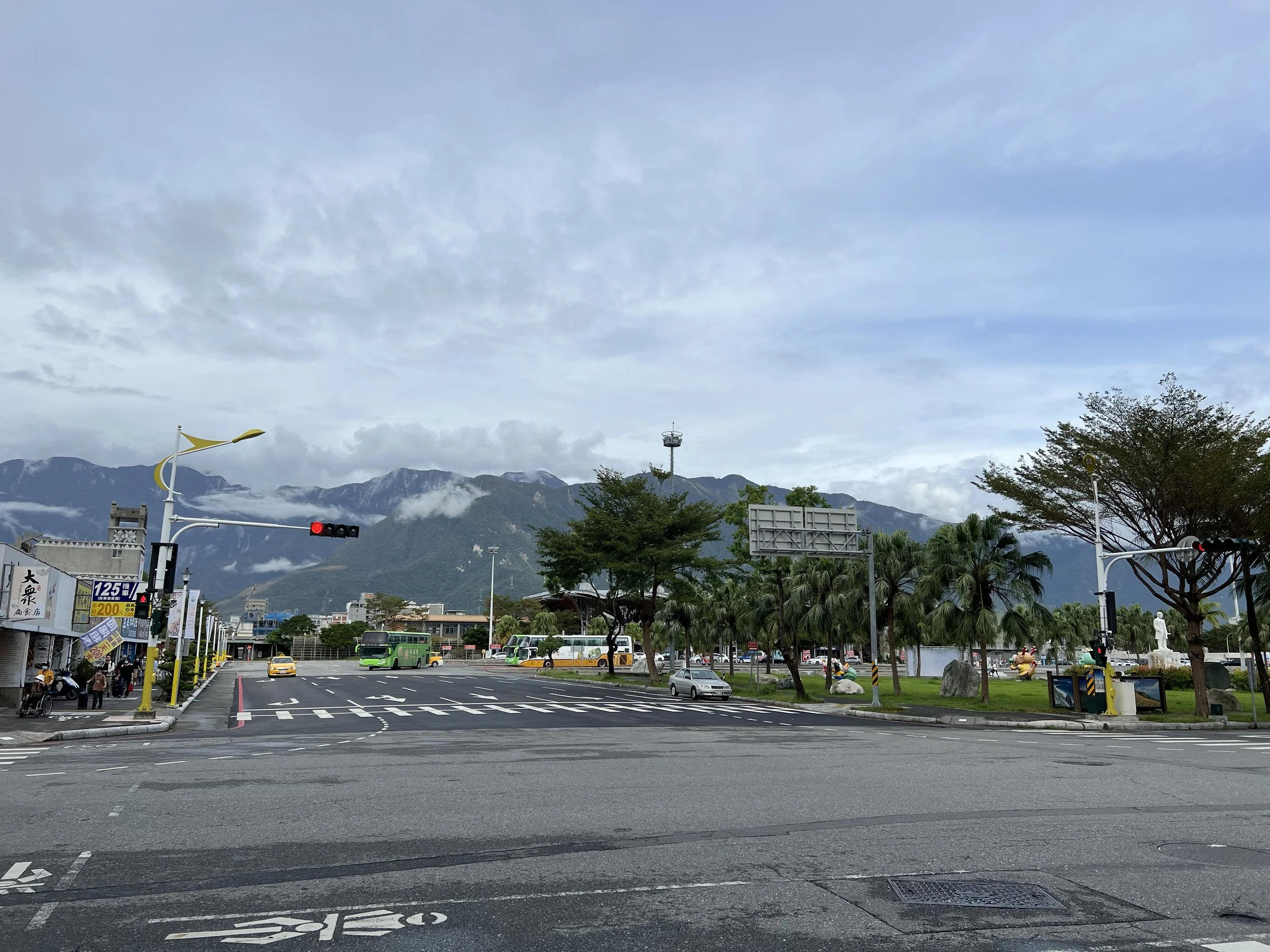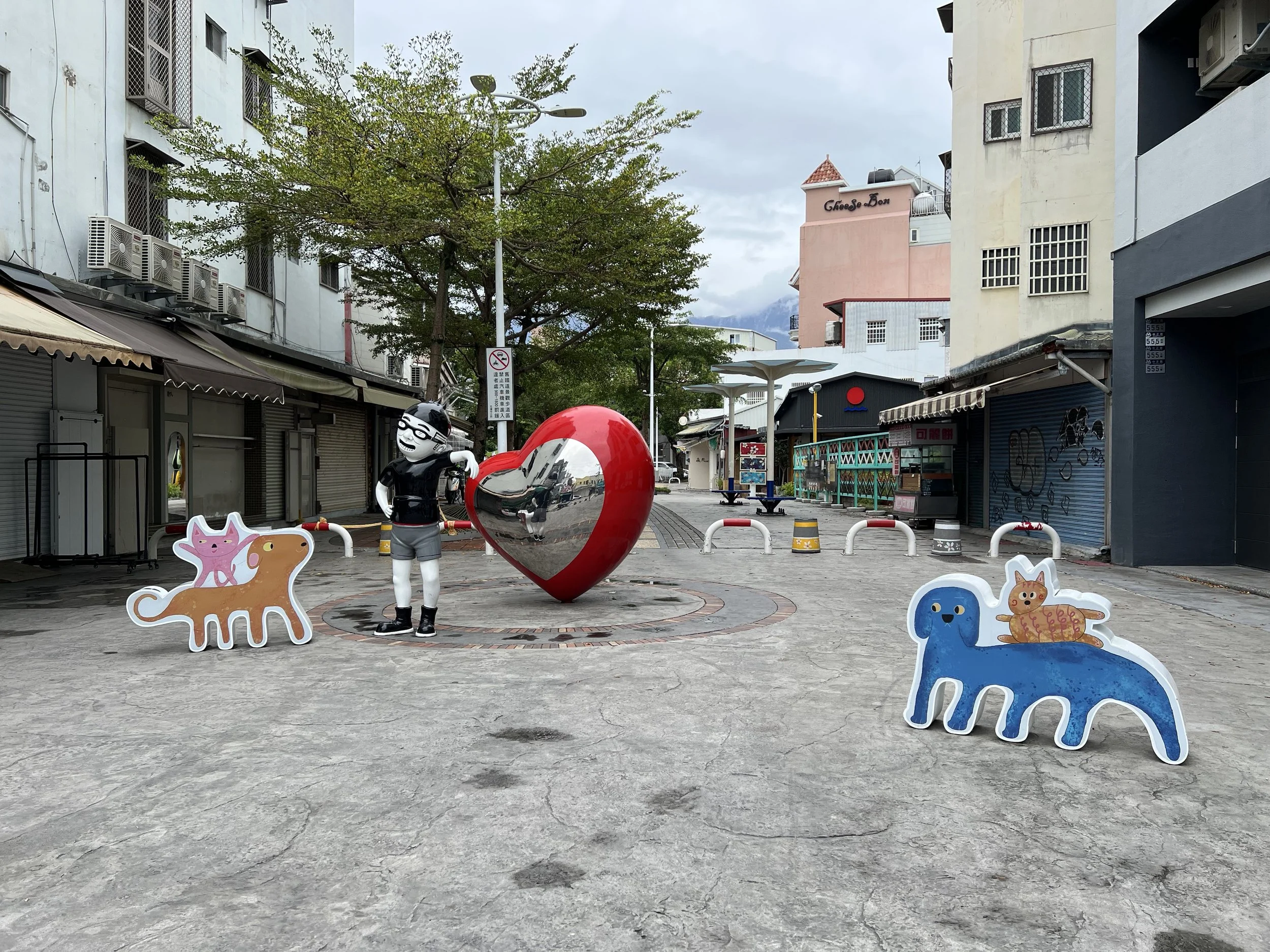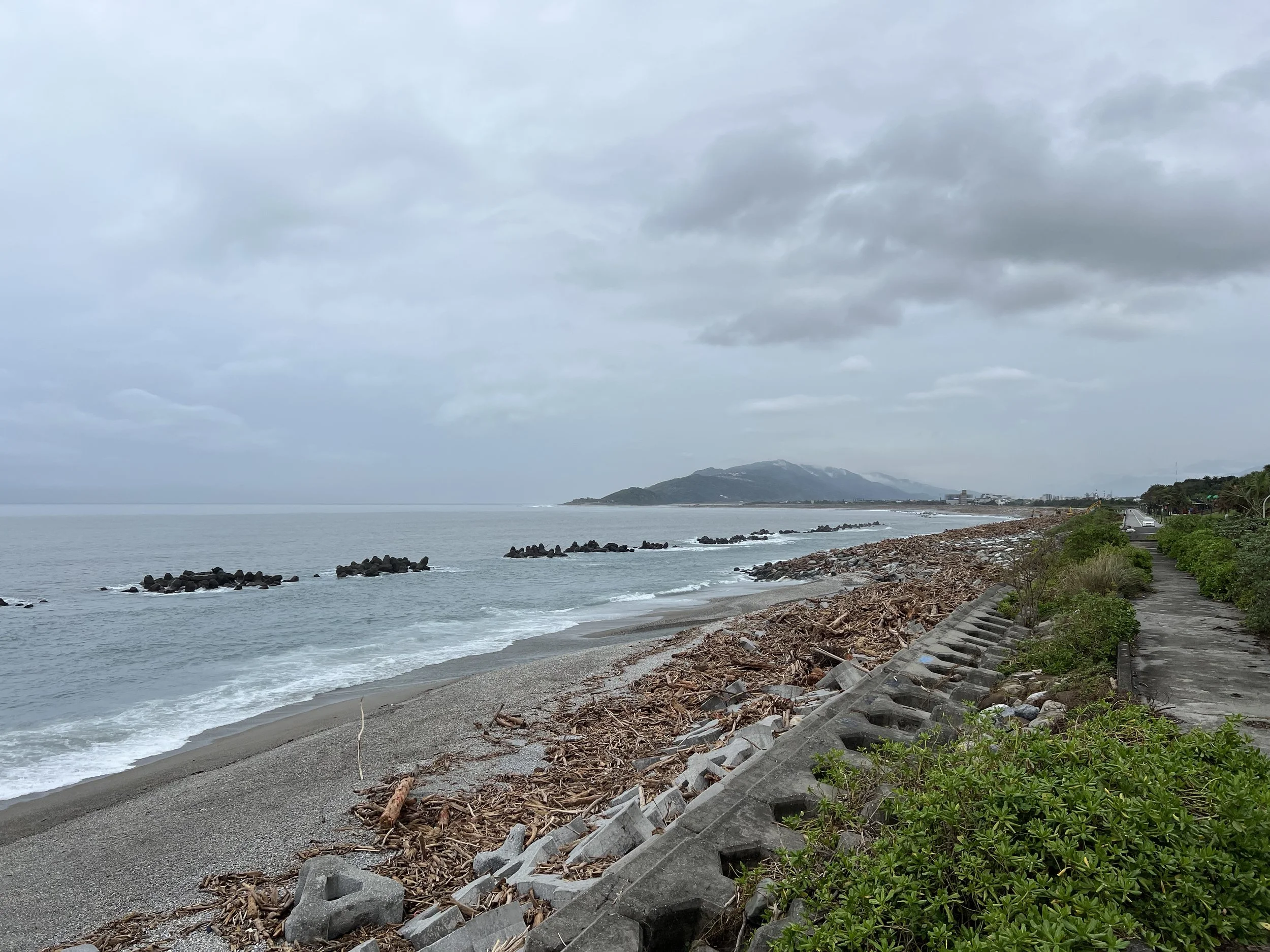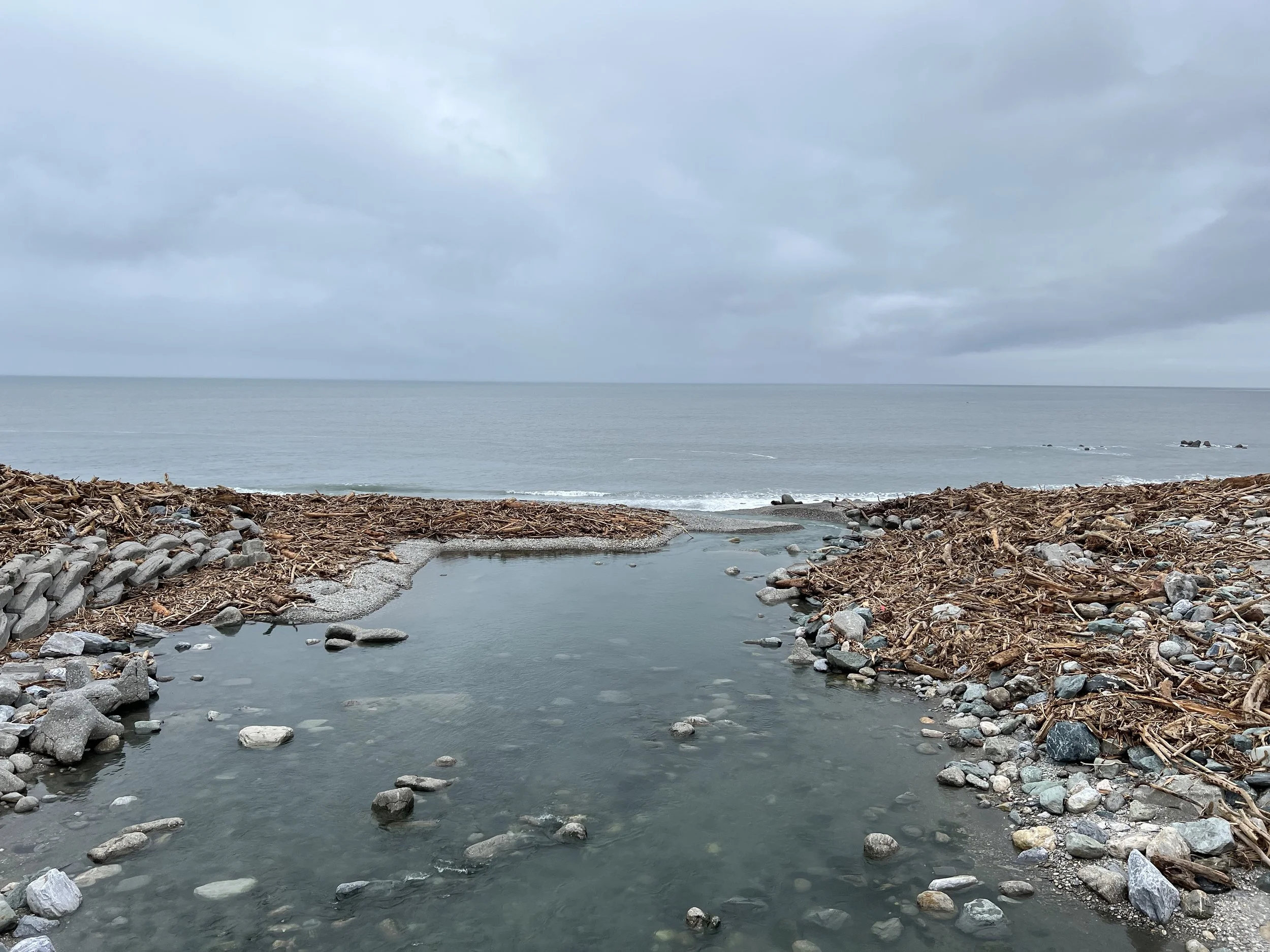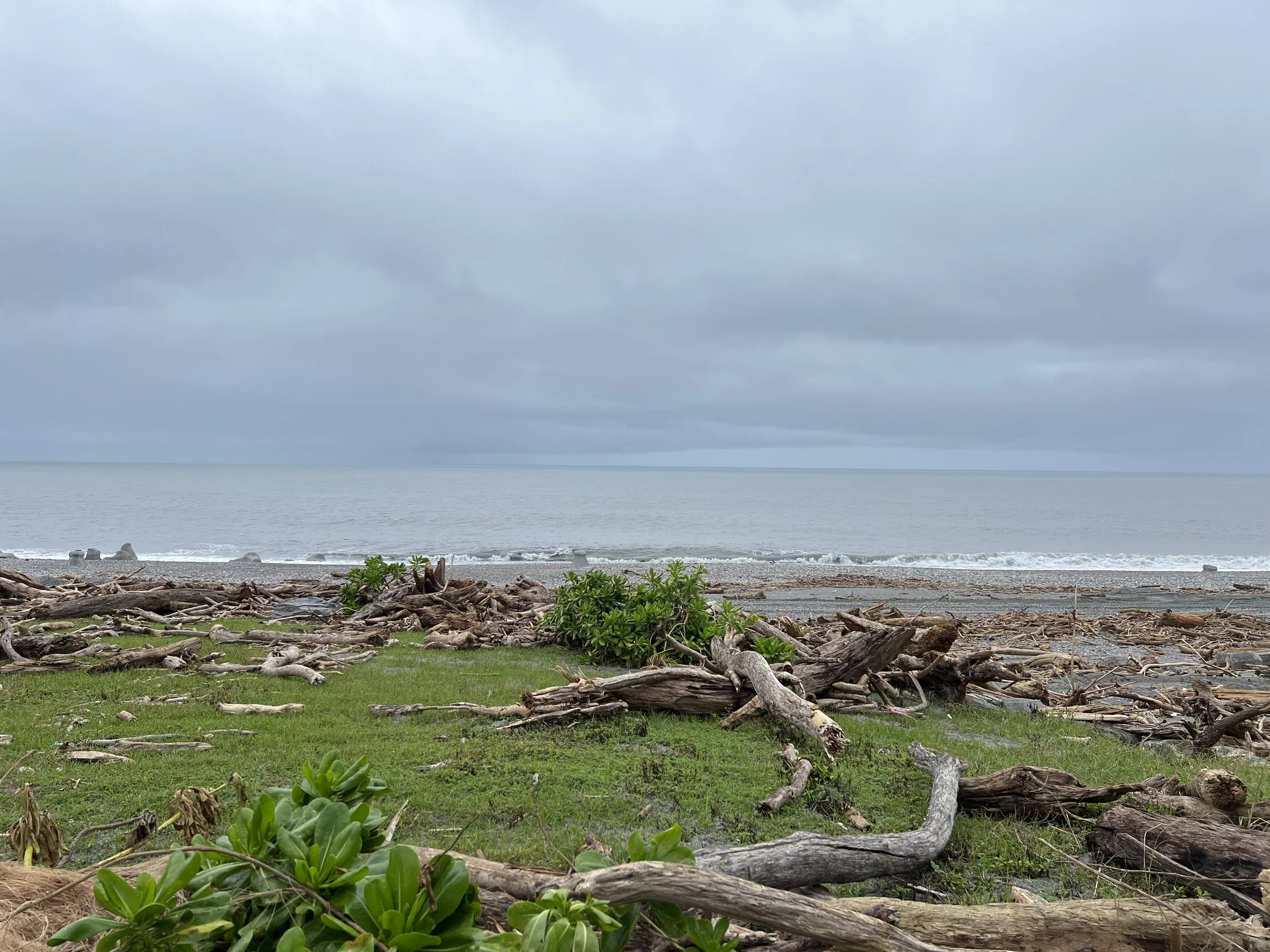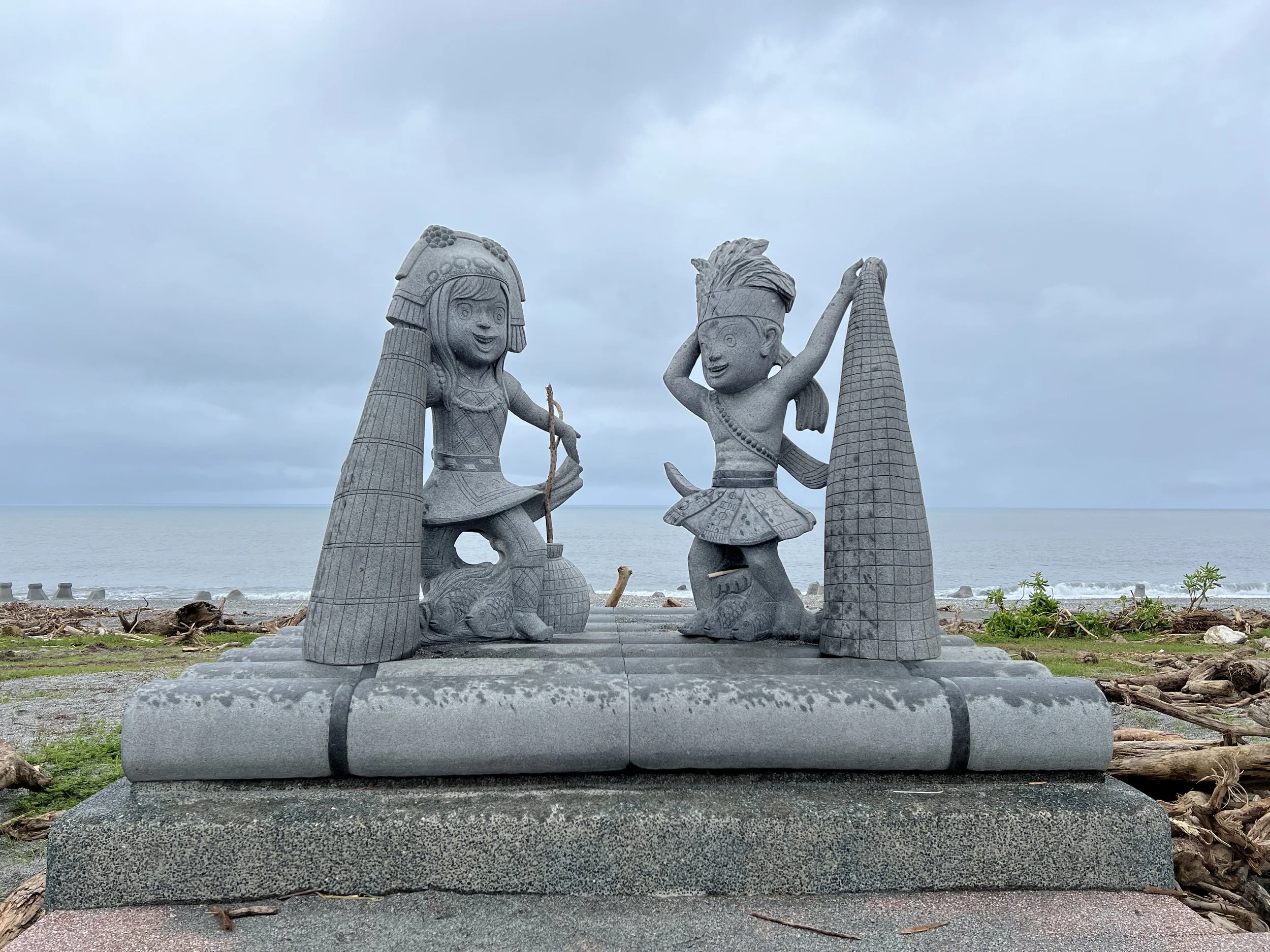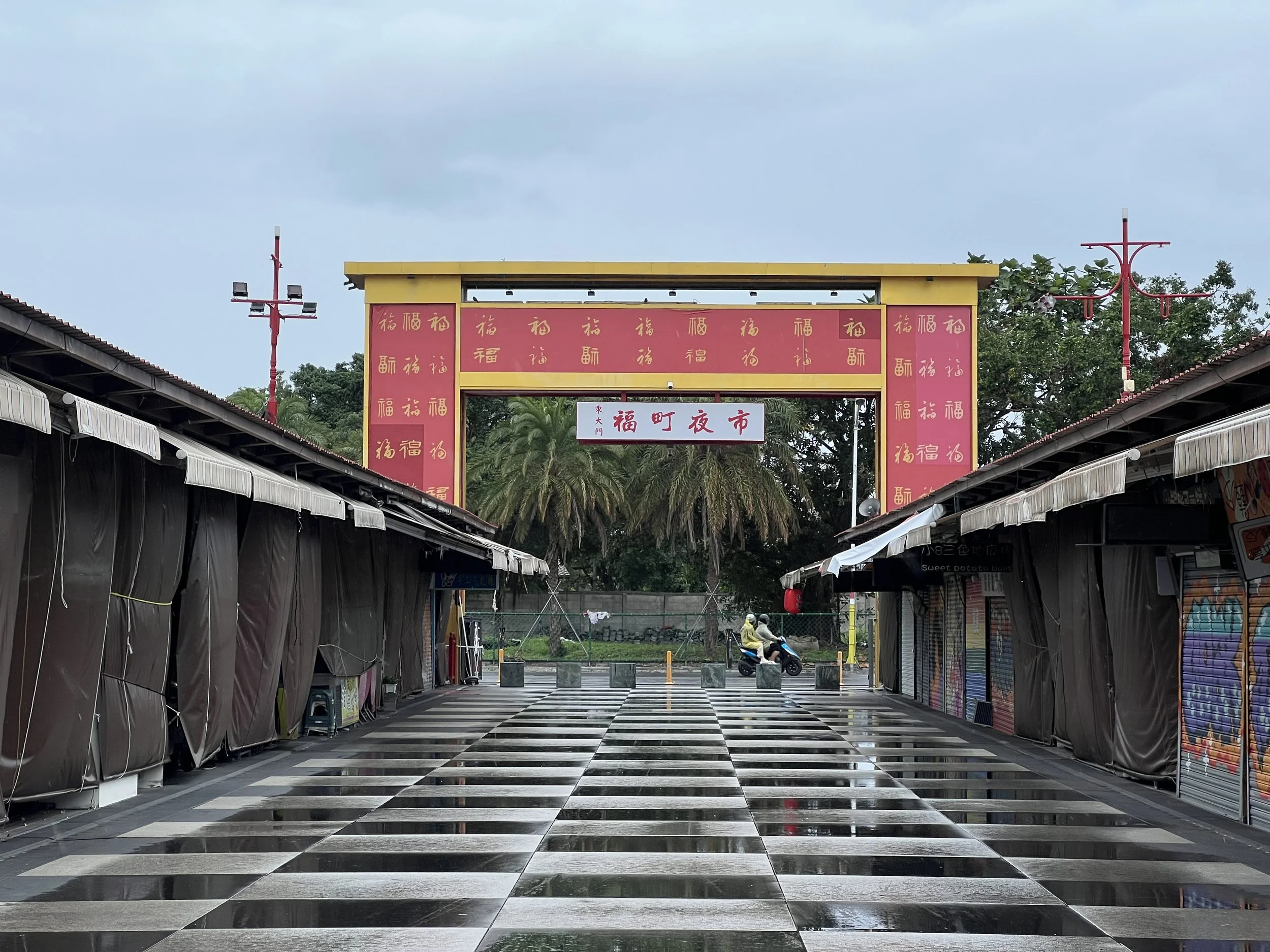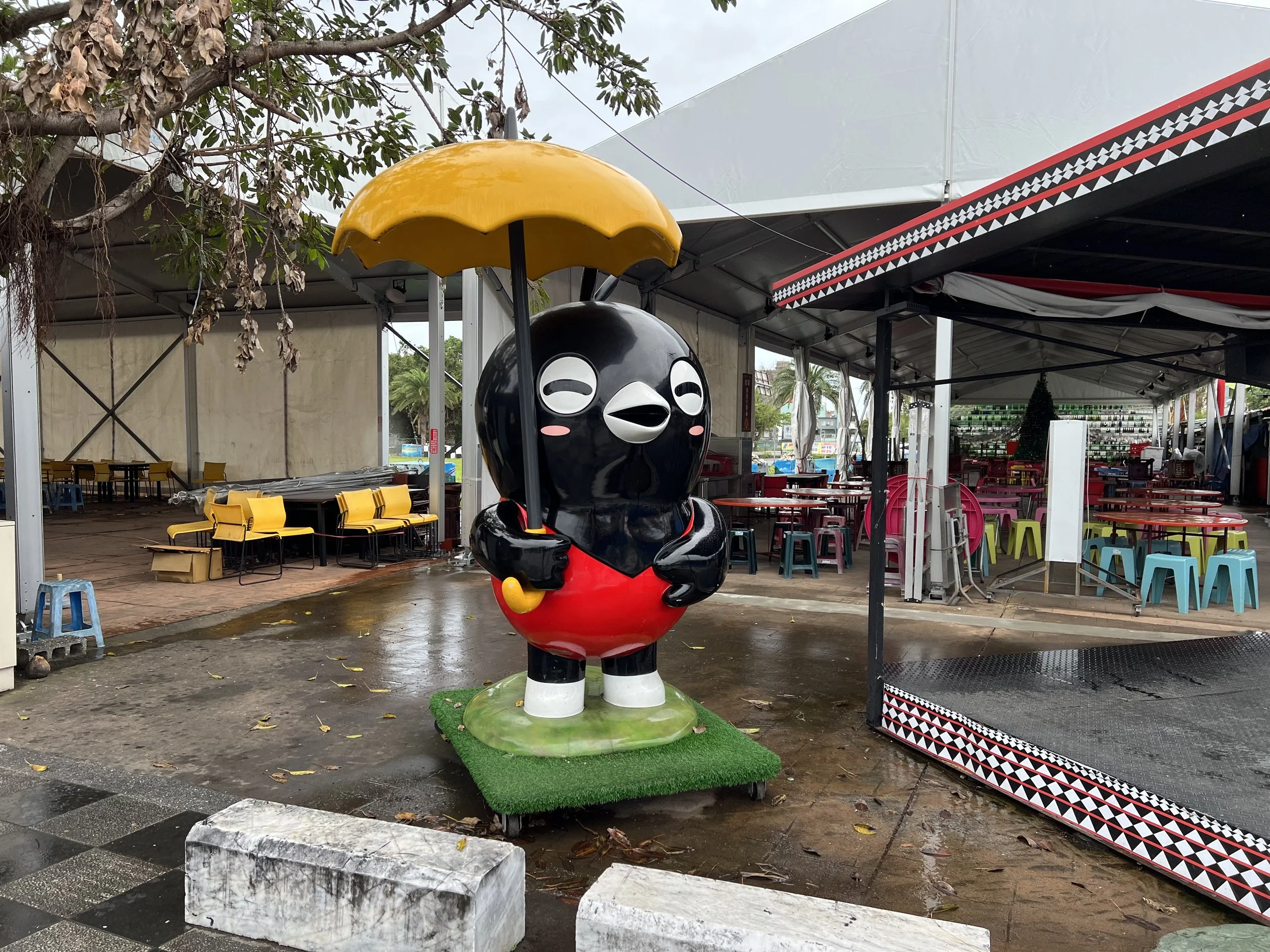Hualien City - Hualien, Taiwan
My original plan was to visit Taroko Gorge, but recent earthquakes and a typhoon had severely damaged the trails and roads. I still went to Hualien, hoping the area would have recovered, but it hadn’t. Instead, I took the opportunity to slow down and rest, surrounded by a city that blends its rich Indigenous heritage with traces of Japanese-era development.
With rain and strong winds in the forecast, I left my hostel and wandered towards the coast—Hualien is well known for its beautiful shoreline. Along the way, I passed charming art installations and a rainbow-themed street that added a bit of colour to the grey day.
When I reached the coast, the aftermath of the disasters was still visible—debris and driftwood scattered across the shore. As the rain began to fall and the wind picked up, I turned back toward my hostel, stopping briefly at the night market, though nothing had opened yet. By the time I returned, the rain was pouring, so I spent the rest of the day reading and resting.
Despite the change of plans, it turned out to be a peaceful and much-needed slow day, offering a quiet moment to reflect on Hualien’s resilience and layered history.
History & Background
Hualien (花蓮), located on Taiwan’s eastern coast, is the gateway to Taroko National Park and the island’s dramatic mountain landscapes. The region is known for its marble cliffs, winding coastal roads, and deep connection to the Indigenous Amis people, who have long inhabited the area.
During the Qing Dynasty (17th–19th centuries), Hualien was sparsely populated, primarily by Indigenous communities and small Chinese settlements. In the early 20th century, under Japanese colonial rule, the area saw the development of roads, ports, and railways, which laid the groundwork for modern Hualien. Earthquakes and typhoons are common due to the region’s geography, but the community remains resilient, continually rebuilding after natural disasters. Today, Hualien combines its rich history, Indigenous culture, and natural beauty, making it a unique destination on Taiwan’s east coast.
Getting There
Hualien is easily accessible from Taipei by train. The Tze-Chiang Limited Express (自強號) is the fastest option, taking about 2–2.5 hours from Taipei Main Station to Hualien Station, with scenic views along the coast. Tickets can be booked in advance through the Taiwan Railways Administration (TRA) website or purchased directly at the station.
For a more flexible option, long-distance buses also run from Taipei to Hualien, though travel time is longer (around 3.5–4 hours) and less scenic. Driving or renting a scooter is possible but not recommended after storms, as roads along the east coast are often affected by landslides or closures.
Route Overview
Distance: 11.63 km out & back (Hualien accommodation)
Total elevation gain: 44 m
Duration: 2 hr 21 min (with breaks 2 hr 36 min)
Difficulty: Easy
Cost Breakdown
Food: NT$356
